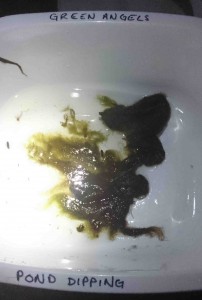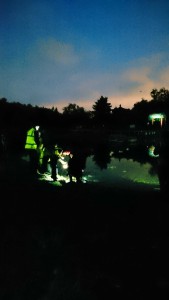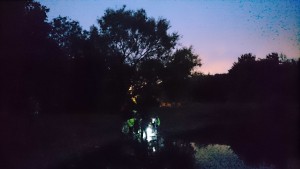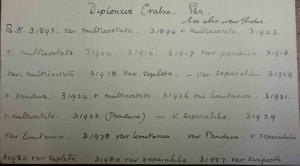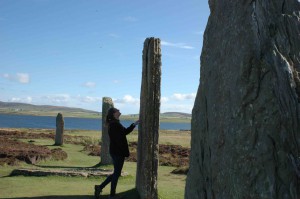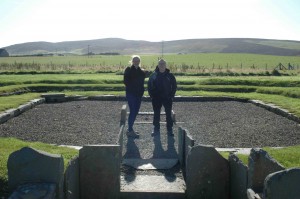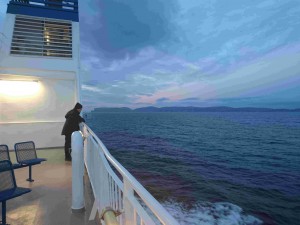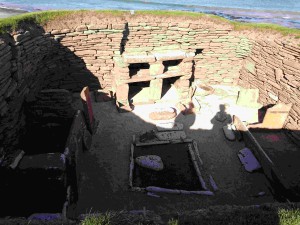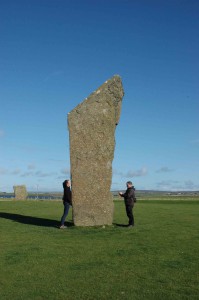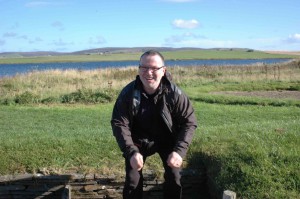
I’m here! Sorry I’ve been so quiet recently. I’ll give you a catch up on what I’ve been up to.
Back in August! I helped the Green Angels deliver their Bioblitz at Festival Gardens which is 10 minutes walk from my house.
It started quite late so the first activity was to lay small mammal traps and then head out on a bat walk. They were out in force; the clamour of magnified bat calls, swelling all around was quite disorientating. But it was great to catch a glimpse of them feeding against the pale twilight sky.
We moved on to an after dark amphibian hunt, finding plenty of smooth newts. We also caught the attention of very noisy local ‘antisocial’ wildlife armed with laser pens and bad language. We weren’t able to get a positive ID so unfortunately we couldn’t record them for the Bioblitz. The next day, a Saturday, was a little wet to begin with. But, by the time the sun came out in the afternoon, Festival Gardens was awash with young families. I offered to help with the pond dipping activity, and as soon as we turned up to the pond with our nets, passing children were abandoning their bikes to join in on the action. This was great; we were getting all sorts of horrible looking larvae thrashing in the water, water boatmen, diving beetles, newts, snails and fish! The kids were really into it; the problem though was that it became a fishing competition of who could catch the most. Next time I need to find away to make a competition out of ‘how many new species can we find?’!
Later that month I went down to London for the 6th European Phocological Congress. It was five days of talks, posters and meeting fellow Phycologists. It was during one of these talks that a speaker praised the work of amateurs in his field of study. Enthusiasts would build their own collections of marine samples then analyse and document the species composition. Today, these are a valuable resource; we have examples to refer to when we talk about a particular habitat or species; we have a ‘snap-shot’ in time that can be compared to later ‘snap-shots’, much like perusing a family photo album; and we can check if we have been calling things by the right name! In this example, the speaker was able to use these collections to assess how ‘alien’ a particular species is, that was first recorded in UK waters relatively recently. It turns out that, until recently, this ‘alien’ had simply been uncommon – but when it did occur it was being misidentified as a more common species. To me, this exemplifies the true scientific value of citizen science. It doesn’t matter that they were initially misidentified, that this uncommon species was missed. The mere existence of a collection (preferably well documented and curated!) allowed someone at a later date, with a particular interest and greater resource, to have a starting point in their investigation or a marker to aim for.
This brings me to my visit to the Natural History Museum in London – I had the privilege to poke around in their collection, an extensive resource that has incorporated many a life’s works including that of enthusiasts. I was looking for more of those Types I mentioned in an earlier blog. What I liked about the collection is the card index; it’s so easy to use and it reminds you that a lot of work has gone into it over the years. Each card is for a particular species and is ordered as such. On each card is a reference number for a slide that has that species represented. So, to find a species, you have to hope that someone else has seen one, been able to identify it and thought it important to record where it was. This is what I like about it; a direct link to someone else’s efforts and a reminder to keep good notes! Below is a picture of such notes, along with infraspecific determinations (variety, form etc.)
I’ll end now with some ‘holiday’ snaps from my little jaunt I took up to Orkney in September. I joined John on his visit to see Susan and her non-native invasives. It’s true it was only a day and I’m a bit daft for not planning a longer stay, but I enjoyed the 14hrs traveling the day before and after, especially the evening and morning ferries! Aside from the collecting trip and the crash course in herbarium techniques for the MSc students mentioned in her blog, here are the Highlights:
Find out more about Natural Talent
Find out more about Esmée Fairbairn Foundation
Find out more about World Museum Liverpool

